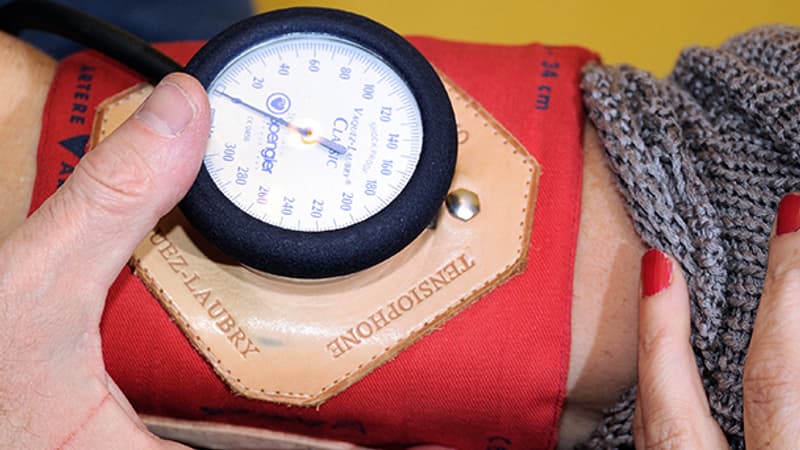France has 17 million hypertensives according to Santé Publique France, which is based on two surveys of the general population and a survey of a panel of general practitioners and the National Health Data System. While one in two hypertensive people does not know that they are sick, Alain Ducardonnet, doctor and BFMTV health consultant, explains when and how to take your blood pressure to monitor your health.
“The principle of taking blood pressure is to be able to perceive the artery that is in the crease of the elbow and you must have a bare arm,” begins the BFMTV specialist.
Once the cuff is installed, “you inflate, to compress the artery until blood no longer passes and little by little you will deflate, the blood will pass” and the blood pressure monitor will give you a first number. When the blood passes again “normally, there will be another number” and it is this data that is “important to assess blood pressure.”
The doctor recommends taking your blood pressure, in the morning or in the evening before going to bed, three times in a row: “The first time the blood pressure will be higher, we are a little moved, the third time will be the highest.” faithful because we will be familiar with taking action”.
the threshold to look
To really know your voltage level, the measurements must be regular, “an isolated measurement has no value”, emphasizes Alain Ducardonnet.
“It is the average of the daily measurements for a month that will tell if you are above ’14/9′, which are the classic reference points for blood pressure. There we can say that you are hypertensive.”
“It is not because we ever have 18 tension that we should treat it”, however, if the tension remains high for a long time, it is necessary to act by resorting to “regular practice of physical activity, reducing your consumption of salt and alcohol or even losing weight a little”, he advises, remembering that there are also pharmacological treatments.
Source: BFM TV


